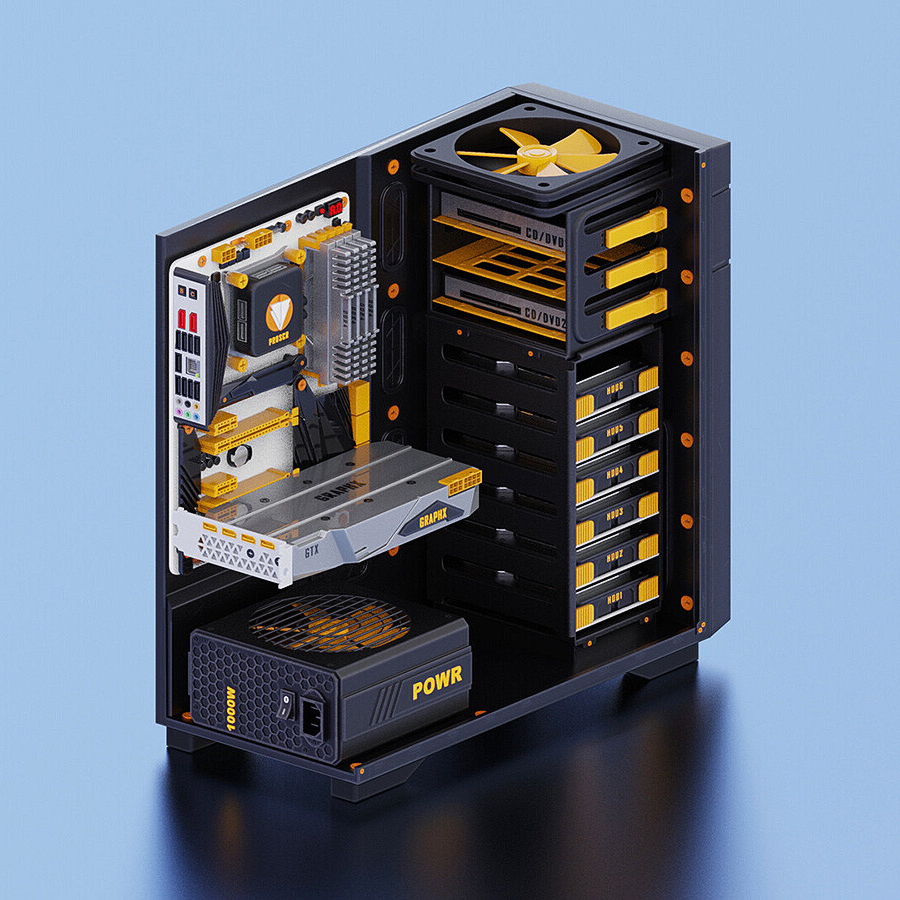

This is a good point. Black PSU and motherboard might stand out too much in that light, white-ish case.


This is a good point. Black PSU and motherboard might stand out too much in that light, white-ish case.


I agree with this. Could easily save $200 buying some older and lower spec components. CPU choice is probably because of the iGPU, but there are other cheaper CPUs with iGPU. I don’t think the use case is going to require more computing power in the future, so I don’t know if future proofing is really necessary. If the use case changes some few years from now, you need to buy new components regardless of your choices today. Save some money now and put it towards a future upgrade.
16GB DDR4 is enough. That’s about $40 off. SSD is pointlessly big for the use case. 250GB might be enough, but even 512GB would be a bit cheaper.
CPU could be downgraded to something a couple generations older. Motherboard can also be downgraded, unless that one has some important features. That saves at least $150 total.
PSU is a complicated question. Cheaper would be enough, but you might lose money over time in your electricity bill. That’s kind of difficult to calculate.
Depending on your needs, virtual machine might be the easiest solution.


From Remedy’s business review JANUARY–MARCH 2024
Codename Condor, a part of the Control franchise, moved to full production meaning it has reached the final development stage before a game is launched. Based on wide internal playtests, we can see that the core loop is engaging, and the game brings a unique Remedy angle to the genre.
Control 2 team has focused on finalizing the proof-of-concept stage, in which the game world, game mechanics and visual targets are proven. We expect the project to advance to the production readiness stage during the second quarter of 2024.
Max Payne 1&2 remake continued in the production readiness stage. The game is expected to move into full production during the second quarter of 2024.
Codename Kestrel continued in the concept stage. The team works to refine the game concept.


Or just wait for the reviews, and then the next sale. These Steam sales aren’t one-off special offers, they happen a few times every year.


Hopefully! It can’t come soon enough… unless they rush it, I suppose. But that’s usually not Remedy’s style.
Have you tried to connect it to the MoBo then? If nothing appears on the display even then, the problem is somewhere else than your GPU.
Also, does the display have more than one input? Have you chosen the correct one from the display?


Human eyes have three kinds of cells (photoreceptors) for color detection. They each react to either red, green or blue light. If more than one of those cells are activated, your brain interprets the light based on what cells activated, and how strongly they activated. If red and green cells activates, the light is seen as yellow. The light is seen as white if all of them activates fully.
This also means that light bulbs can produce white light by simply producing three wavelengths (colors) of light. The problem with that kind of “fake” white is that colors will look wrong under such light due to the way how objects reflects light. This is very common with low quality LED lights, and even the best smart lights aren’t very good at it. When buying LED lights, you might want to look at the CRI (Color Rendering Index) value and make sure it’s above 90, or as high as possible.


I think it’s simply a question of what are Google’s interests. Users doesn’t pay anything to Google for the service, so that’s not where Google’s interests are. Advertisers pay Google, so that’s where Google’s interests are. Google has no interests to make the search better for users, they want to make it better for advertisers.


I think it would be enough if other search providers would be required to give a portion of their profit from each search to Google.


From the article:
The data breach started with hackers accessing only around 14,000 user accounts. The hackers broke into this first set of victims by brute-forcing accounts with passwords that were known to be associated with the targeted customers, a technique known as credential stuffing.
From these 14,000 initial victims, however, the hackers were able to then access the personal data of the other 6.9 million million victims because they had opted-in to 23andMe’s DNA Relatives feature. This optional feature allows customers to automatically share some of their data with people who are considered their relatives on the platform.


And at work he missed home.


Might also want to upgrade your dice to d20 while you’re at it.


Does this joke never end?


#BotLivesMatter
Peerless Assassin isn’t much more expensive. I have it on my Ryzen 5700x, and it’s never audible. At idle my PC is pretty much silent and while playing games GPU and case fans hides any noise the PA makes.